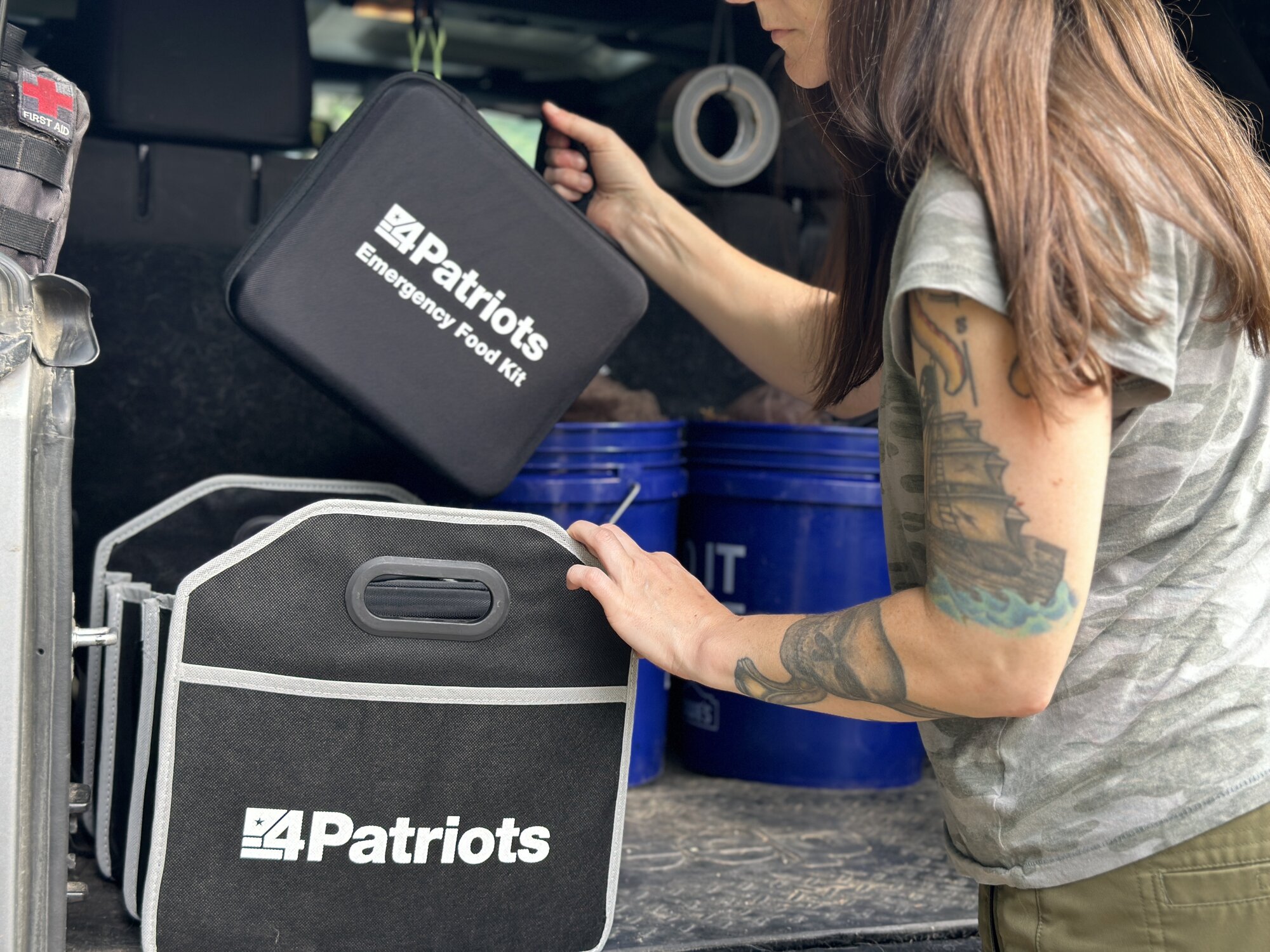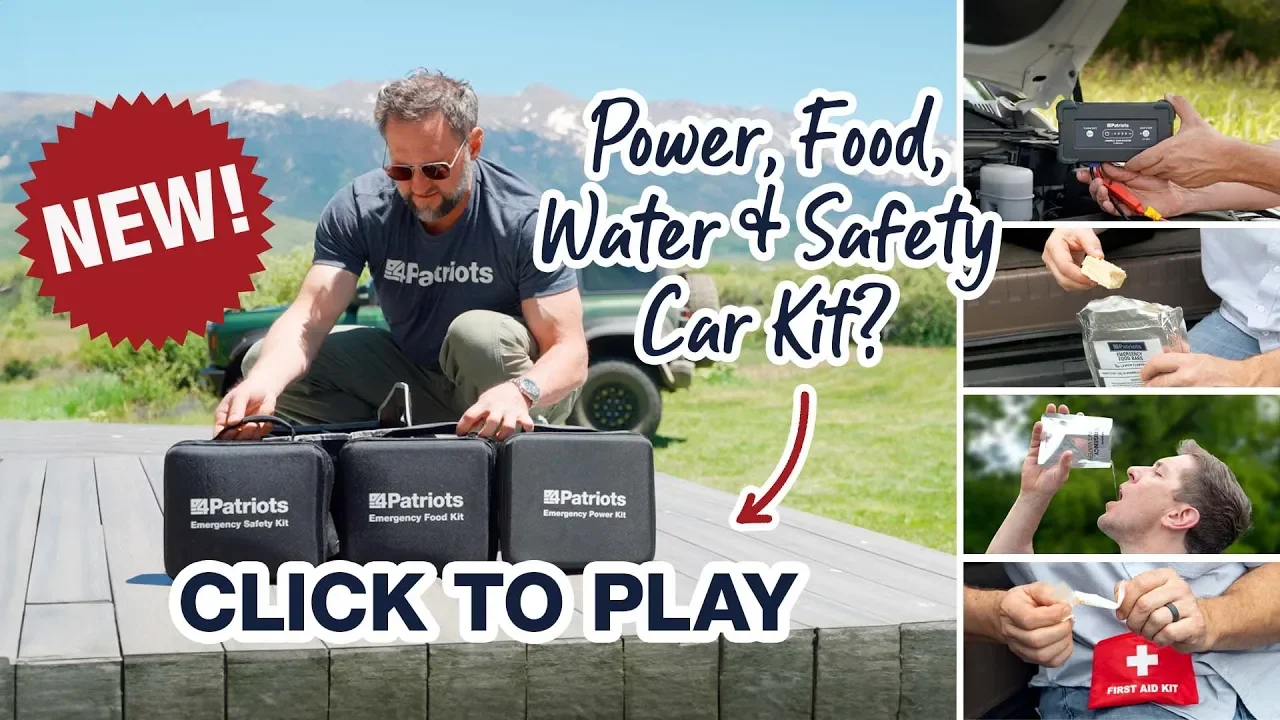Severe Spring Weather: Car Safety Checklist
Of all the places you could be stuck during an extreme weather event, your vehicle is probably not the worst.
After all, you have shelter from the storm, as well as heat or air conditioning—provided there's enough gas to keep your vehicle running.
But it’s not the most convenient place when it comes to your biological needs, including food and water.
Many extreme weather events cause accidents, some of which can block roads for hours at a time. Even if you’re “safe” in your stranded condition, you’re going to get hungry. And that half-eaten candy bar sitting on the back seat isn’t going to cut it.
Assume You’ll Get Stranded
Spring might be the most welcomed season of the year, especially for those who just endured a rough winter.
But spring also brings severe weather in many parts of the country. Late-season snowstorms, tornadoes, and heavy rainstorms producing flooding can wreak havoc on your travel plans.
Today, I’d like to provide some advice on how to prep your vehicle to effectively deal with extreme spring weather, as well as some suggestions on items to keep inside your vehicle in case you get stranded.
Maintenance Makes Car Sense
First, let’s tackle how to prep your vehicle so that it’s ready for whatever extreme spring weather we might face.
- Keep your gas tank as full as possible. No need to stop every few blocks, but never let it get below half full.
- Get regular oil changes and keep a couple of unopened quarts of oil in your trunk.
- Check your fluid levels frequently. Windshield wiper fluid can be a lifesaver in a snow or ice storm. Keep an extra bottle in your trunk, along with antifreeze.
- Check your battery regularly. A dead battery is the most common reason drivers get stranded.
- Inspect your spark plugs and carry spares, along with extra fuses.
- Make sure your brakes are in top shape. No need to explain why.
- Check your tire pressure and tread regularly.

Vehicle Emergency Kit Items
Now, let’s turn our attention to the items you should have in your vehicle’s emergency kit.
- Vehicle insurance card with roadside assistance phone number
- Power bank to charge your cellphone and other electronic devices
- Spare tire and jack—know how to use them
- Small but sturdy foldable shovel to dig out of snow or mud
- Roadside flares or glow sticks
- Foam tire sealant for minor punctures
- Tactical flashlight
- Jumper cables
- First-aid kit
- Tool kit, including screwdrivers, pliers, vise grips, wrenches, tire pressure gauge, and a multi-tool
- Car fire extinguisher
- Wool blankets and a sleeping bag
- Boots, wool socks, gloves, and hats
- Towels (both cloth and paper)
- Duct tape
- Rain gear, umbrella, snow brush, and ice scraper
- Sanitary items, including hand sanitizer, trash bags, and wipes
- Hand-crank radio
- Whistle
- Road maps
- Sand or non-clumping cat litter for tire traction
- Tow rope
- Fire starters
- Cash
- Notebook and pens
- Emergency contact information
- Reflective vest
- Pepper spray, in case of an unwanted approach from a human or animal
- Drinking water
- Non-perishable food

The Patriot Power All-In-1 Emergency Car Kit is a done-for-you, 95-piece kit built by survival experts who know how to plan for any emergency.
References:
- All testimonials in this advertisement are from real people; sometimes names and photos have been changed to protect their privacy and some were given free products in exchange for their honest feedback. Testimonials represent exceptional results, don't apply to the average purchaser and are not intended to guarantee that anyone will achieve the same results. The organizations, publications and people referenced on this site are not affiliated with 4Patriots. They have not endorsed, sponsored or recommended this product; no affiliation or endorsement is claimed. Terms & conditions apply. Cade Courtley is a former Navy SEAL and Platoon Commander who served 9 years of active duty and has been compensated by 4Patriots for his hard work in helping us test and endorse this product. Cade Courtley is a former Navy SEAL who served 9 years of active duty and has been compensated by 4Patriots for his hard work in helping us test and endorse products.
- U.S. Consumer Product Safety Commission. CPSC Releases New Report on Carbon Monoxide (CO) Fatalities, Urges Generator Safety in New PSA. August 2022.
- Peak output for the Patriot Power Generator increased from 3,048 W (1800 model) to 4,000 W (2000X model). Continuous output is 1,800 W and 2,000 W, respectively. Storage capacity for DC devices increased from 768 Wh (1800 model) to 1536 Wh (2000 model).
- Refrigerators, freezers and similar appliances maintain a safe temperature by running on cycles. The CDC recommendation is to keep temperature below 40°F and above 32°F. If starting with a cold appliance, running backup power to your fridge for 1 hour will maintain temperature for about 4 hours. Usage conditions will impact this estimate (interior temp, exterior temp, appliance age & features, fridge contents, etc.). Click here for more tips on cycling your fridge or freezer.
